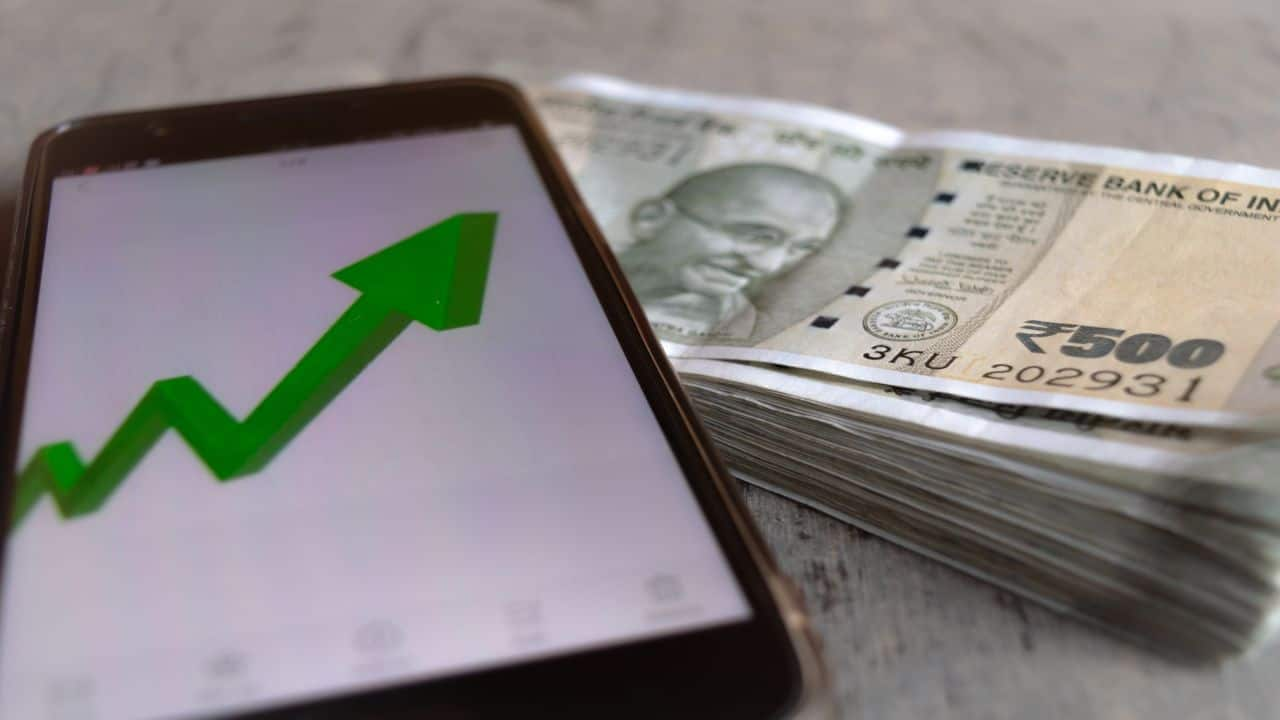Global equity strategist Christopher Wood of Jefferies sees promising signs for the Indian stock market next year, hinging on a potential pick-up in nominal GDP growth.
According to Wood, a combination of policy measures and monetary easing could provide the much-needed impetus to the economy, setting the stage for equity market gains.
Wood points to recent income tax cuts as a positive catalyst, while emphasising that the broader impact will come from the rationalisation and simplification of the Goods and Services Tax (GST), alongside potential rate cuts.
He also highlighted the significant monetary easing underway, which he believes could collectively drive stronger nominal GDP growth.
Wood explained that foreign inflows into India have been held back due to the ongoing US tariff issue. Under normal circumstances, capital might have started flowing into the country over the past couple of months.
Looking ahead, he expects foreign institutional investors to turn into net buyers by the end of this calendar year, especially for those who anticipate a pick-up in nominal GDP growth, even if the tariff issue remains unresolved.
These are edited excerpts of the interview.
Q: The Indian market at the headline level has been sideways for about 14 months, the Nifty that is. We have seen a large amount of underperformance - for example, the MSCI Asia ex-Japan Index year-to-date, is up 21%. India is up 1% a 20%-point underperformance so far. What is your sense, is that underperformance about to reverse, or is there more time correction on cards?
A: First of all, that is a relative story. It is less India doing badly than other markets doing well, and India has always had this premium valuation. In the big picture, this is just a year of healthy consolidation in the Indian stock market, and what makes us remains, in my view, the best structural growth story in global equities. So personally, I am not surprised that we have had this year of consolidation because we had high valuations and the big negative for the market, at least one major negative, is there being the huge supply, companies raising capital. But that makes sense from the corporate perspective, because the valuations are high.
The big positive for the Indian stock market is the huge continuing mutual fund inflows have absorbed this supply. Now, if those domestic mutual fund flows did not exist, the Indian market may be down about 20-30% and then that would have triggered big foreign buying, but because the domestic flows have been absorbing the supply, we have had this sideways trading pattern. But in the big picture, it's a healthy consolidation.
Q: Is that likely to continue, though for the rest of the year?
A: It is quite conceivable that it wouldn't be a surprise if we traded sideways for the rest of the year. Now, if we get a sudden resolution of this US India trade thing that will trigger a short-term rally. But the more important point in India is, do we get a pick-up in nominal GDP growth next year, based on the monetary easing seen under the new RBI governor, and based on the various policies to trigger a boost in consumption demand initiated by the government this year.
First of all the income tax cuts, and then clearly, more important is the rationalisation and simplification of GST and the rate cuts, plus the monetary easing we are seeing, which has been considerable. All of this, hopefully should lead to a pick-up in nominal GDP growth next year, which, in my view, will lead to a stock market rally next year. But I am assuming a pick-up in nominal GDP growth. If I am wrong on that, then I am too bullish.
Nominal GDP growth is key, because corporate earnings are reported in nominal terms, not real terms. Historically, India has been growing in a 10 to 12% nominal GDP range. This year, nominal growth has been, I believe, below 9% and that reflects the relatively lacklustre earnings outlook. However, I am expecting a pickup in nominal GDP growth next year, that is the key driver.
Q: A nominal growth is 8.8% quite low by what we have seen in here in India?
A: Year-on-year, but that was higher than what we and the market was expecting. The most recently reported GDP data came out stronger than I or the market was expecting.
Q: You are saying it's entirely conceivable, the market stays sideways for the rest of the year, but if we get a sudden resolution to the India US trade issue, you may get a bit of a tactical rally that's the call?
A: Definitely, and there has got to be a 50% possibility of that, simply because it is quite clear that these 50% tariffs are rather anomalous. It seems pretty clear they were triggered by the US President some personal peak that he wasn't allowed to intervene in the India Pakistan dispute. And it seems pretty clear, from a US foreign policy standpoint, this these 50% tariffs have needlessly antagonised India.
It doesn't make sense from the US standpoint, from a diplomatic standpoint, to encourage an improvement in India relations with China. So for all these reasons, they are probably looking for some - my guess is the US is looking for some kind of deal. But if the US continues to insist that India opens up agriculture, or that India stops buying all Russian oil, then there will be no deal.
Q: So how will this deal happen?
A: Well, it may not happen. My view is very simple - in this Indian government, and no Indian government is going to open up agriculture. And my view is also very simple that this Indian government is not going to be ordered around by the US about not buying Russian oil, most particularly when it's pretty clear to everyone that this oil is refined in India and then bought by the Europeans.
The biggest risk to India - now if world oil prices dropped substantially and there's no longer cost advantage buying Russian oil, then maybe India will stop buying Russian oil. But that's a different story. Indian government's not going to be ordered around by the US about Russian oil, I think that has been very clear ever since this whole conflict started.
There are other areas where you can have both sides, can make compromises, which would allow for a face-saving deal, but obviously it has to be on both sides. There's a possibility of a deal, but I wouldn't be buying stocks and leverage on the basis of that. The key reason to be adding to India the next few months is, if you believe my story, that nominal growth will pick up.
Q: That is the reason to buy Indian stocks, and not, of course, on the back of a deal, but a deal you said there's a 50% chance of that happening will result in a tactical rally here in India?
A: I was just going to say the good part about this 50% tariffs it is accelerated what the government was planning to do anyway, but it's definitely made them expedite the policy, and that was to simplify the GST structure and cut the rates. So in that sense, the 50% tariffs will turn out to be good news in the medium term.
Q: FIIs have sold about $28 billion of Indian stock since the highs in September of 2024. You started by saying it's not so much about India, but it's about other markets doing well. What are you hearing from large global asset allocators about what they want to do and FII positioning in India is what 15-year lows, 16-year lows, when does that start to turn?
A: That is very interesting and statistic because the reality is, the last several years, the best two stock markets to own in the world have been the US market and India. It is interesting that the FIIs position has become so low. I think there's a series of kind of some ways coincidences. Last year, basically, fourth quarter last year, there was big foreign selling of India to buy China and that made sense, because China basically, in my view, put in a long term bottom. Fourth quarter last year at about 7-8 times earnings. So that was one, definitely big driver of India being sold to fund increased investments in China. And we have got to remember, most of the foreign money in India is dedicated emerging market money.
In more recent months, what's been going on is that people have been selling India to fund increased investments in Korea. Korea has had a huge move this year, and most foreign investors have missed it, so they hae been playing catch up. And they have also been having to buy back Taiwan because the AI trades been running on Wall Street, and the Taiwan market is the same trade as the S&P 500, because the S&P 500 is dominated by big tech and Taiwan's dominated by TSMC. So that's what's been going on in terms of people selling India to fund Korea and Taiwan.
If it wasn't for this Trump tariff issue, there would have been a chance that money would have started to enter India in the last two months. But because of the Trump tariff issue, the return of foreign money has been delayed. But going into next year. For people who buy my story that nominal growth is picking up, I would expect FII eyes to turn net buyers by the end of this calendar year, even if this tariff issue is not resolved.
Because by the end of the year, the impact of this monetary easing should be starting to show up in the real economy, the rate cuts, etc. the more greater ability of financial institutions to lend plus we have the impact of the GST.
Q: In your Greed and Fear Portfolio, where does India stand? Are you overweight, underweight and very briefly, if you can give, give us a flavour of what you've done lately.
A: I still have decent Indian weightings in all my various portfolios. But these are structural longer term portfolio, so I am not running them too tactically. In my more tactical relative return portfolio though this year, I have only been very marginally overweight India, which for me, is very underweight. Because the only time I have really been big underweight in India in that relative portfolio in the last 20 years was back in about 2011-12, when we had some sovereign debt issues in India. And tactically, right now I would be looking to reduce China and add to India, given China's big outperformance off late.
Q: Let us now get to some of the global stuff and start with the Fed - 25 basis point cut this week. The bigger question though is, is this likely to be the start of a rate cutting cycle? because earnings growth in the US remains strong, and at the same time you are getting rate cuts. So it's like Goldilocks in a way, once again. What is your sense?
A: The rate cuts are clearly a signal that the Fed is prioritising the labour market over inflation, because the labour market clearly, the data has weakened in recent months, so it is getting harder to find a job. But it's not like there's massive evidence of people being laid off in America. There is no great evidence we are about to have a US recession. What's clear is the Fed has decided to prioritise the labour market over inflation, and I say that because the inflation saw significantly above the 2% target.
In this environment, clearly, there's potential for more of a melt up in the US equity market on the Fed easing, and you can make a perfectly respectable argument that the Fed shouldn't be easing yet, but the reality is, the Fed is going to ease. Then you have got the political reality of the growing pressure from the Trump Administration on the Fed to cut rates that, in my view, is not about US economy or worries about the labour market. The Trump Administration on the Fed to cut rates, in my view, is primarily driven by the desire to reduce the debt servicing cost of funding the federal government debt. Most of federal government debt is financed by short term treasury bills. So, if federal funds rate is cut by 200 basis points, that will significantly reduce the debt servicing cost. That's what's driving this pressure on the Fed.
Q: Your call is in this environment, right or wrong - we are not debating that if the Fed were to embark on a rate cutting cycle, US equities can see a melt up from here. Any targets on the S&P in this environment?
A: I haven't got a target on the S&P, but in theory, they should just cut rates once and wait for the data. That is probably going to be the official fed line. But if the market senses that is a real the beginning of an easing cycle, then you do have that melt up risk. My fundamental view, though, on the US stock market is it is extremely overvalued. My other fundamental view is that the AI capex boom, which is driving the market, will lead to a lot of misallocated capital.
And I retain them my base case, which I have had all year that the US has peaked as a percentage of world market capitalisation. But that's partly driven by the view that the dollar has entered a long-term downtrend. So far, I updated the numbers this week the US is below the 67 peak of world market cap, which it reached on December 24 last year.
US stock market is much more high beta than most markets, because the US stock market rally in recent months has not been driven by institutions. The institutions were surprised by the extent of the rally, given all the negative noise around tariffs, and it's definitely that a big retail component this US market rally, the AI capex theme has been driving it, and in many ways, the AI capex theme creates an echo chamber, because people will have been buying US stocks because AI large language models will have been telling them to buy a to buy AI capex stocks.
Q: The dollar the dollar index is down 10% on a year-to-date basis. You think it's got a lot more downside?
A: Short term? Who knows? But in the medium term my base case is the dollars entered a long-term downtrend. That's a key part of my call, that the US has peaked, made an all-time peak as a percentage of world market cap. It also should be a following win for the emerging market equity asset class. But for now, it's a big positive for what the US the Americans call the international asset class, and the asset class is the world ex-US. And I showed a chart in my presentation at the conference this week, which shows that the world ex-US has broken out of a trading range since 2009. So that chart for now is confirming my base case, that the US has peaked as percentage of world market cap, even though the US stock market is trading at a record high.
The trading range they have been in since 2009. So it's not just emerging markets outperforming, a big part of that is Europe outperforming, and also Japan.
Q: Lots of interest with regards to what's happening in gold. Gold was at $1,000 in 2008 it took 12 years for gold to double to $2,000 in 2020. It's taken just five years for it to double again. I mean, not yet, but $3,700 so very close now, what's the view here?
A: I remain constructively bullish on gold. I set a target of $3,600 an ounce for gold back in 2002. It's finally reached that target, frankly, it should have reached that target 10 years ago, given all the crazy things have been going on with G7 monetary policy, so we are now reaching more for sensible levels in gold. The short-term issue for me was gold going to break $3,500. So now with we have broken $3,500 so it's beginning to look like gold's entered a new trading range.
I remain structurally bullish, on gold, but the really exciting story right now is the gold mining stocks. Because the gold mining stocks have been underperforming bullion in this bull market that began in 2022. I mean, the real gold rally accelerated following the freezing of the Russian foreign exchange reserves in early 2022 driven by Central Bank buying since then, gold mining stocks have been underperforming gold.
Historically, gold mining stocks outperformed gold in a bull market. And what's happened in the last couple of months, gold mining stocks have started to rally strongly because they are making a lot of money right now because they are in the perfect situation. Gold price is going up and the oil price is low, and their major input cost is energy, and the gold mining companies are not hedging their gold production anymore. So unless there's some operational issue in a mine, gold mining companies are printing money. That is the best sector to be investing in globally.
Q: Any targets on Bitcoin?
A: So basically, gold and Bitcoin are the two key plays on long term dollar debasement. In my global equity portfolio, I have 10% in gold mining stocks and 6% in Bitcoin. So Bitcoin off late has been consolidating, but to me, this is a healthy consolidation, and the next big move in Bitcoin is up. So I want to own both gold and Bitcoin, because there's a demographic issue here. The millennials may not buy gold where they will be buying Bitcoin, but if you said to me, you can only own gold or Bitcoin, I will own gold simply because history is on its side.
Q: So, you are bullish on both Bitcoin and gold, but you are saying near term gold may have entered a bit of a trading range, although you are structurally bullish and you continue to own both
A: Gold was in this trading range, between $3,000-3,500. In the last two week it has broken above $3,500. So the key question now is the gold going to break out significantly higher that's the key issue right now. That's why it's interesting that in recent weeks, the gold mining stocks have gone vertical. Now, the other interesting point about the gold mining stocks, when I last checked, there was net outflows out of gold mining stock, ETFs year-to-date.
Q: Let us just come to President Trump now, in terms of these global conflicts, I know when we spoke, and this was before the inauguration, you said he's very keen and that he's going to end wars. So far, the Russia, Ukraine war no end in sight. Any thoughts there?
A: On that particular point, there was big expectations, including from me, that we may have got resolution on Ukraine with Donald Trump returning to the White House, which would have been a negative for gold, by the way, because the biggest risk to gold, tactically is all these sanctions on Russia are removed as a result of a deal. Now, the problem for Donald Trump is he didn't end the war quickly, because to end the war, he had to basically cut off funding to Ukraine, which would then have created incentive for the Ukrainians to focus on trying to do a deal with Russia.
But he didn't cut off the funding Ukraine and so the problem for Donald Trump right now is, what he called Biden's war has now also become his war. And it's very hard to do a deal on the Ukraine, Russian situation, which you can put portray as a victory for the West, because the reality on the ground, so far as one can tell, is that Russia is prevailing in the war. So to do a deal, you have to significantly, you have to put the pressure on the Ukrainians to make a deal. And clearly that's not happened. So there's no sign of that being resolved at the moment.

 1 month ago
1 month ago














